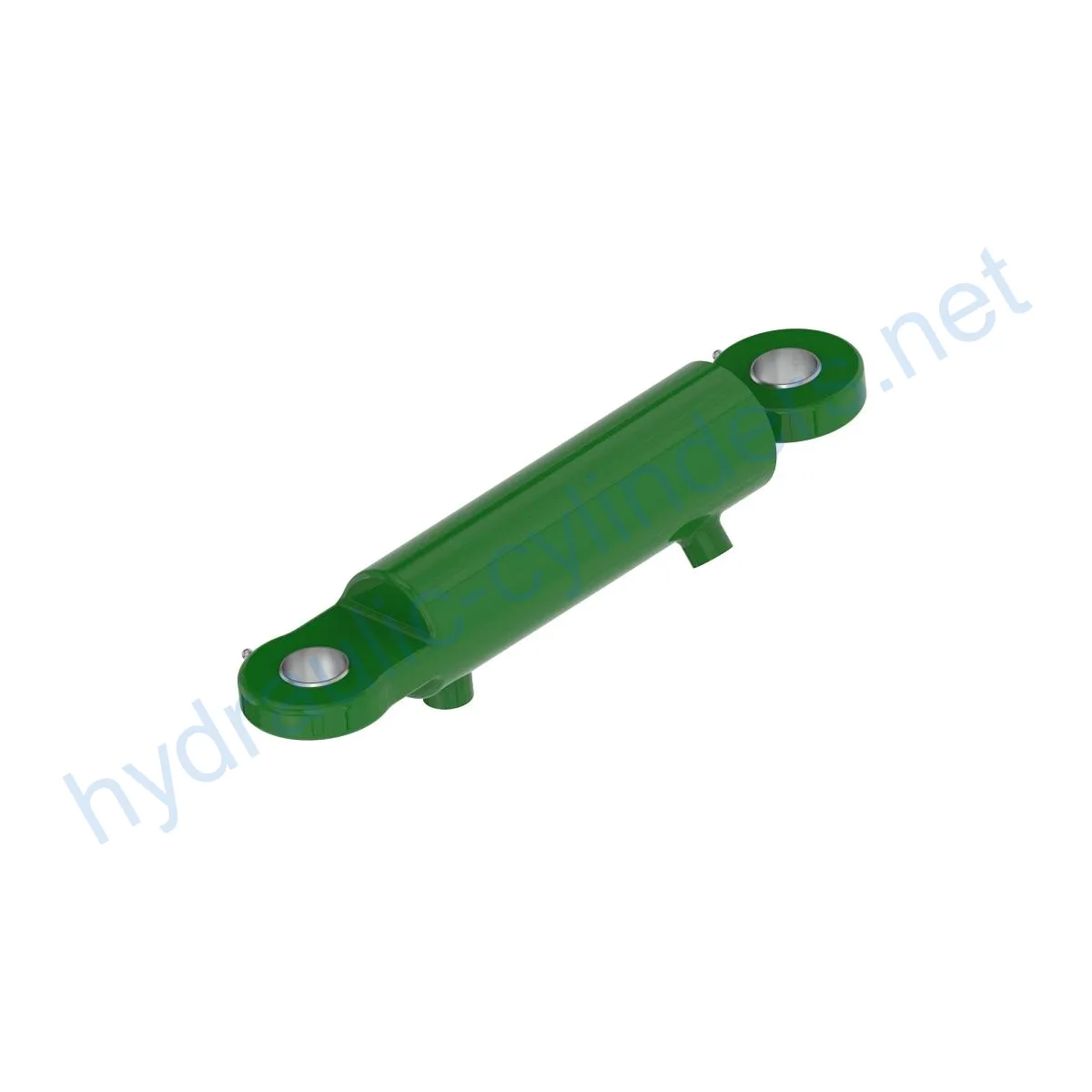Replacement Of RE199206 Hydraulic Cylinder
Üheks hüdrosilindrite tootjaks, tarnijaks ja mehaaniliste toodete eksportijaks pakume hüdrosilindreid ja paljusid teisi tooteid.
Palun võtke meiega ühendust üksikasjade saamiseks.
Post:sales@hydraulic-cylinders.net
Tootja tarnija eksportija hüdrosilindrid.
Replacement Of RE199206 Hydraulic Cylinder
The Replacement Of RE199206 Hydraulic Cylinder is a high-quality hydraulic component designed to replace damaged or worn-out cylinders. It plays a crucial role in the proper functioning of various machinery and equipment.
Specifications
Weight: 18 lb
Height: 3.5 in
Length: 17.5 in
Compatible Models
7M 200
7M 215
7M 230
7200J
7215J
7230J
7630
7720
7730
7820
7830
7920
7930
Features
Improved Equipment Performance: Replacing damaged or worn-out hydraulic cylinders can restore the normal operation of equipment, ensuring its performance in various applications.
Enhanced Safety: Regular replacement of hydraulic cylinders reduces safety hazards caused by cylinder failure, ensuring the safety of operators and equipment.
Overload Protection: New cylinder designs often incorporate better overload protection mechanisms, improving safety.
Quick Installation: Modern hydraulic cylinders are designed for easy installation and replacement, minimizing downtime.
Standardized Components: Many hydraulic cylinders are standardized products, making it easy to obtain replacement parts in the market.
Our Production Capability
We have the capability to produce this product, and our hydraulic cylinders are a perfect replacement for the models mentioned above.
Applications
Excavators: Hydraulic cylinders in excavator arms or buckets may get damaged due to prolonged use or overload, requiring replacement for normal operation.
Cranes: The hydraulic cylinders in crane jibs are prone to wear and tear during frequent lifting and lowering processes, necessitating regular replacement for safety.
Tractors: Hydraulic cylinders in front-end loader attachments of tractors may develop leaks or performance degradation during constant lifting and tilting operations, demanding replacement.
Harvesters: The hydraulic system undergoes high pressure during harvesting, and cylinders may get damaged due to fatigue, requiring timely replacement to maintain work efficiency.
Automated Production Lines: Hydraulic cylinders are used to control robotic arms and other automated equipment. Cylinder failure can significantly impact production efficiency and should be replaced immediately.
Die Casting Machines: In high-pressure and high-temperature environments, hydraulic cylinders may experience performance degradation. Regular replacement ensures product quality.
Mining Equipment: Hydraulic cylinders are used for lifting and moving heavy loads in mining equipment. Due to harsh working conditions, regular inspection and replacement are necessary to avoid equipment failure.
Bulldozers: Wear and tear of hydraulic cylinders on bulldozer blades can result in a decrease in pushing capability, requiring timely replacement to maintain operational efficiency.
Maintenance Tasks
Regular Inspections: It is important to periodically inspect hydraulic cylinders for signs of damage or wear.
Proper Lubrication: Adequate lubrication is essential to ensure smooth operation and extend the lifespan of hydraulic cylinders.
Seal Replacement: Over time, seals may deteriorate, leading to leaks. Regular seal replacement is necessary to maintain optimal performance.
Safety Considerations and Environmental Factors
When using hydraulic cylinders, it is crucial to follow safety measures to prevent accidents. Ensuring proper installation, lubrication, and adjustment is essential.
Troubleshooting and Common Problems
Leakage: Hydraulic cylinders may experience leakage due to seal damage or wear. Regular inspection and seal replacement can resolve this issue.
Slow Operation: If the hydraulic cylinder operates slowly, it may indicate a problem with the hydraulic system or a worn-out cylinder. Proper diagnosis and timely replacement can solve this issue.
Irregular Movement: If the hydraulic cylinder moves inconsistently or fails to operate, it may be due to internal blockages or faulty components. Troubleshooting and component replacement may be required.
Unusual Noise: Strange noises during cylinder operation may indicate issues such as air trapped in the system or damaged components. Identifying and resolving the source of the noise is important.
Troubleshooting Tips and Solutions
To effectively diagnose and resolve problems, it is recommended to follow these tips:
Refer to the equipment manual for troubleshooting guidance.
Inspect and clean hydraulic lines and connections regularly.
Check for proper oil levels and ensure the hydraulic system is adequately lubricated.
Use the appropriate tools and techniques for disassembling and reassembling hydraulic cylinders.
Consider preventive maintenance to minimize potential issues.

Design Considerations and Selection Criteria
When considering the design and selection of hydraulic cylinders, several factors should be taken into account: load-bearing capacity, sealing capability, durability, safety, and ease of maintenance.
Sealing and Lubrication
To ensure optimal performance, various sealing components such as piston seals and rod seals are used. These seals are made of wear-resistant materials such as polyurethane and nitrile rubber. Additionally, the cylinder body and threaded ends undergo meticulous surface treatments to enhance wear resistance. Regular lubrication with the appropriate hydraulic oil is necessary.
Regular Inspection and Preventive Maintenance
Proper installation, lubrication, and adjustments are vital for the longevity of hydraulic cylinders. During installation, it is important to provide guidance on aligning the cylinder correctly and suggest the use of suitable mounting brackets for stability. Recommended inspection, repair, and replacement procedures should be followed, and replacement parts and rebuilding services should be provided to extend the lifespan of the cylinders. Tips for improving the longevity of the hydraulic cylinders should also be shared.


